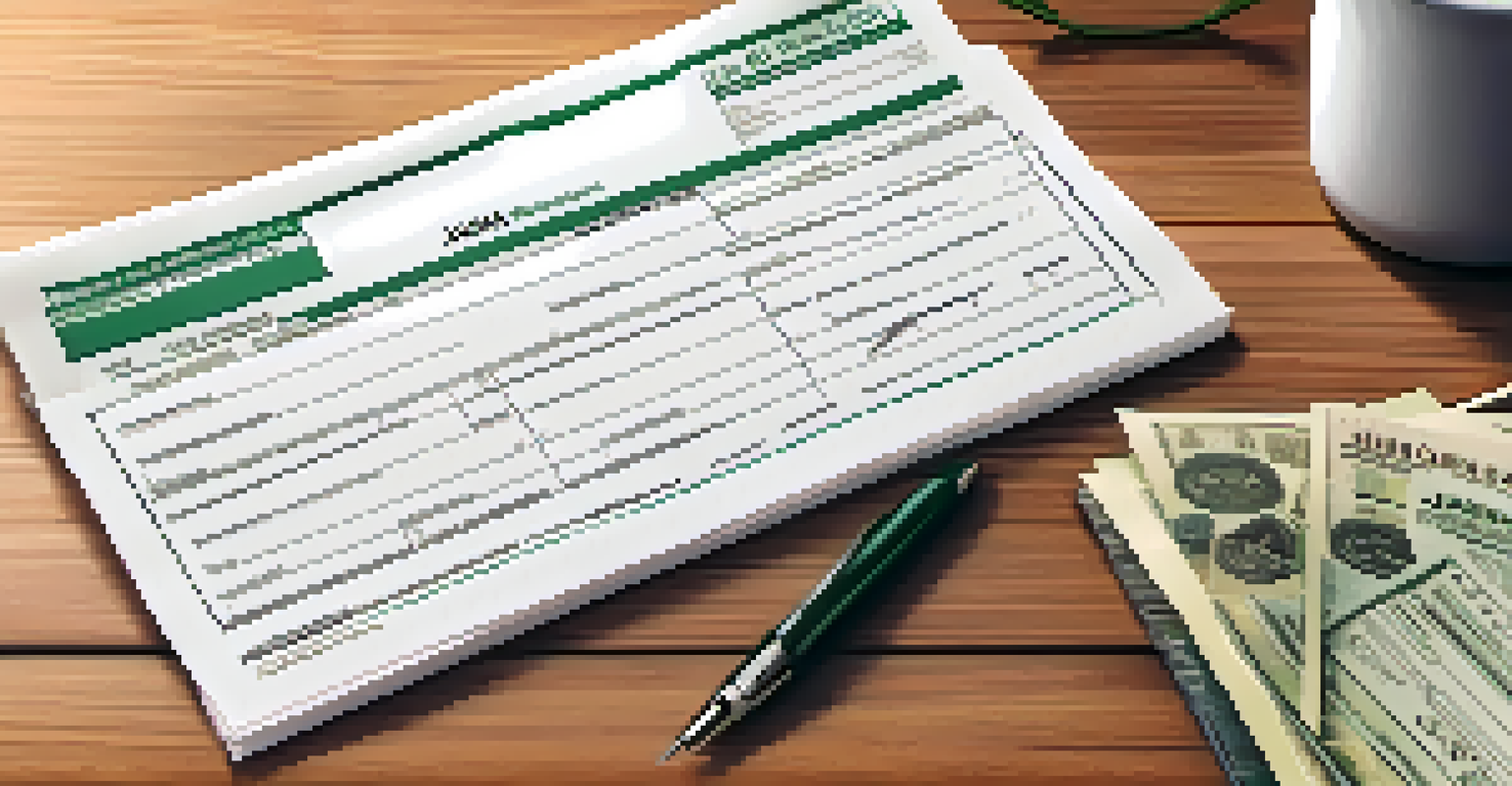USDA Loans: Financing Options for Rural Homebuyers

What Are USDA Loans and How Do They Work?
USDA loans are government-backed mortgages designed to help low to moderate-income families buy homes in rural areas. These loans are part of the U.S. Department of Agriculture's initiative to encourage homeownership in less densely populated regions. They provide an opportunity for homebuyers who may not qualify for traditional financing due to income or credit constraints.
Home ownership is a cornerstone of wealth building and stability for families.
One of the standout features of USDA loans is the ability to finance 100% of the home's purchase price, meaning no down payment is required. This makes them particularly attractive for first-time homebuyers or those with limited savings. Additionally, USDA loans typically have lower interest rates compared to conventional loans, further easing the financial burden.
To qualify, borrowers must meet certain income limits, which vary by location and family size. The properties must also be located in designated rural areas as defined by the USDA. So, if you’re dreaming of a home with a big backyard and a little elbow room, a USDA loan could be the key to making that dream a reality.
Types of USDA Loans Available
There are primarily three types of USDA loans: the Guaranteed Loan, the Direct Loan, and the Home Improvement Loan. Each type caters to different financial situations and borrower needs, making it essential to understand which one suits you best. The Guaranteed Loan is the most common and is issued by approved lenders with a USDA guarantee, while the Direct Loan is offered directly through the USDA for those with lower incomes.

The Home Improvement Loan helps existing homeowners make necessary repairs or upgrades to their properties, ensuring their homes remain safe and livable. This can include anything from roof repairs to energy-efficient upgrades. Understanding these options allows you to choose the right path for your homeownership journey.
USDA Loans Support Rural Homebuyers
USDA loans are designed to help low to moderate-income families purchase homes in rural areas with favorable terms.
Additionally, each loan type comes with its own eligibility criteria and benefits. By assessing your financial situation and future goals, you can determine which USDA loan option aligns with your needs.
Eligibility Requirements for USDA Loans
To qualify for a USDA loan, borrowers must meet specific eligibility requirements set forth by the USDA. These include being a U.S. citizen or a qualified non-citizen, having a steady income, and demonstrating the ability to repay the loan. Typically, your income should not exceed 115% of the median income for your area, allowing for a fair opportunity for those in various income brackets.
A house is made of walls and beams; a home is built with love and dreams.
Additionally, the property itself must be located in a designated rural area, which can sometimes be broader than you might think. Some suburban areas also fall under USDA eligibility, so it’s worth checking the USDA’s property eligibility map. This flexibility opens doors for many potential buyers who may not have considered rural living before.
Lastly, having a reasonable credit score is important, although USDA loans are generally more lenient than conventional loans. A score of around 640 is often the benchmark, but exceptions may be made with compensating factors, such as a strong income history or low debt-to-income ratio.
Benefits of Choosing USDA Loans
USDA loans offer numerous benefits that make them an appealing choice for rural homebuyers. One of the biggest advantages is the no down payment requirement, which can save you thousands upfront. This feature is particularly beneficial for first-time buyers who might struggle to gather a traditional down payment.
Another significant benefit is the competitive interest rates associated with USDA loans. Since these loans are government-backed, lenders can offer lower rates, allowing you to save money over the life of the loan. Lower monthly payments mean more flexibility in your budget for other expenses, like home improvements or family activities.
Three Types of USDA Loans Available
There are three main types of USDA loans—Guaranteed, Direct, and Home Improvement—each catering to different borrower needs.
Moreover, USDA loans come with lower mortgage insurance premiums compared to FHA loans, further reducing your monthly costs. With all these benefits combined, it’s easy to see why USDA loans are a popular choice for those looking to settle in rural areas.
Understanding the Application Process
Navigating the USDA loan application process can feel daunting, but breaking it down into steps makes it manageable. Start by gathering your financial documents, including proof of income, tax returns, and credit history. This documentation will be crucial in helping lenders assess your eligibility and loan amount.
Next, identify approved lenders who are experienced with USDA loans, as they will guide you through the process. It's essential to shop around for the best loan terms and interest rates. Once you've chosen a lender, they will help you complete the application and submit it to the USDA for approval.
The USDA will review your application to ensure all eligibility criteria are met. This process can take some time, so patience is key. Once approved, you can move forward with your home search and eventually secure your dream home in the countryside.
Common Misconceptions About USDA Loans
There are several misconceptions surrounding USDA loans that can deter potential borrowers. One common myth is that USDA loans are only for low-income individuals, which is not entirely accurate. While they are designed for low to moderate-income families, the income limits can be surprisingly generous, accommodating many who may not consider themselves low-income.
Another misconception is that USDA loans are only for farm-related properties. In reality, they can be used to purchase any home in eligible rural areas, including single-family homes, townhomes, and some condos. This opens up a wider range of options for buyers looking for space and tranquility away from urban environments.
Eligibility Criteria for USDA Loans
To qualify for a USDA loan, borrowers must meet specific income limits and property location requirements set by the USDA.
Lastly, some believe that the approval process for USDA loans is lengthy and complicated. While it does involve several steps, having the right lender can streamline the process significantly. Understanding these misconceptions can help you approach the USDA loan process with confidence.
Tips for Successful USDA Loan Approval
To increase your chances of getting approved for a USDA loan, it’s essential to maintain a good credit score. Even though USDA loans are more forgiving than traditional loans, a score above 640 will generally put you in a better position. Use this time to pay down debts and avoid taking on new loans or credit cards before applying.
Another tip is to ensure your documentation is thorough and organized. Lenders will require various financial documents, so having them in order can speed up the process. This includes pay stubs, tax returns, and bank statements, as well as any other information regarding your assets and liabilities.

Lastly, consider working with a lender who specializes in USDA loans. Their expertise can guide you through the intricacies of the process and help you navigate any potential pitfalls. By following these tips, you can set yourself up for a successful application and closer to owning your rural dream home.